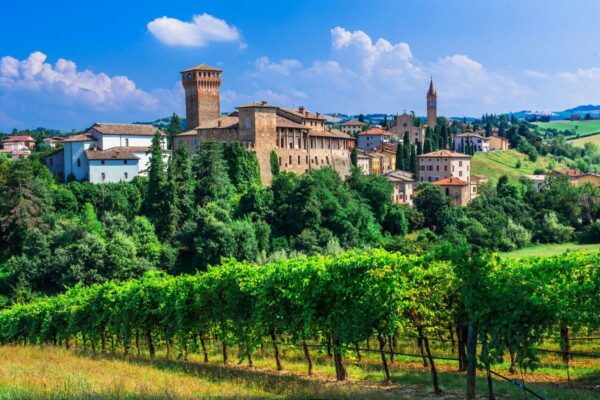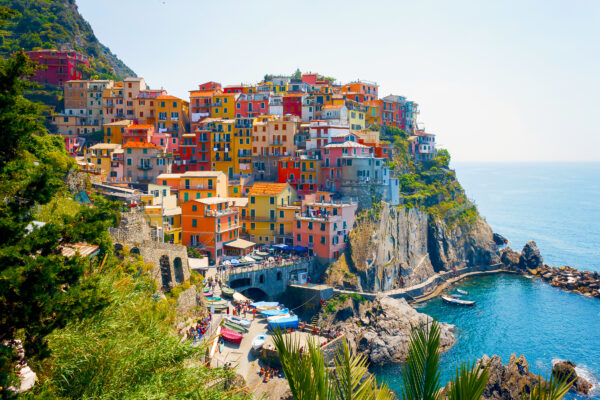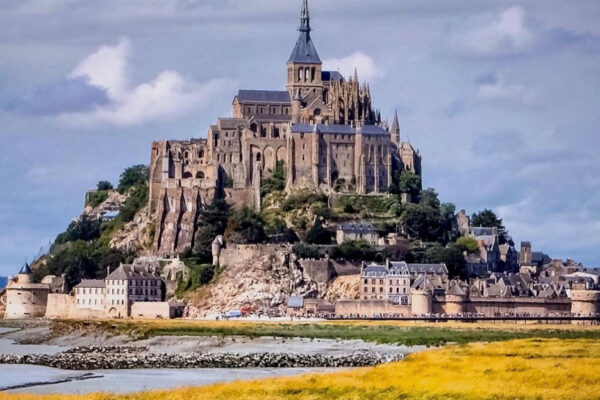The Preposterous Wonder that Is Venice
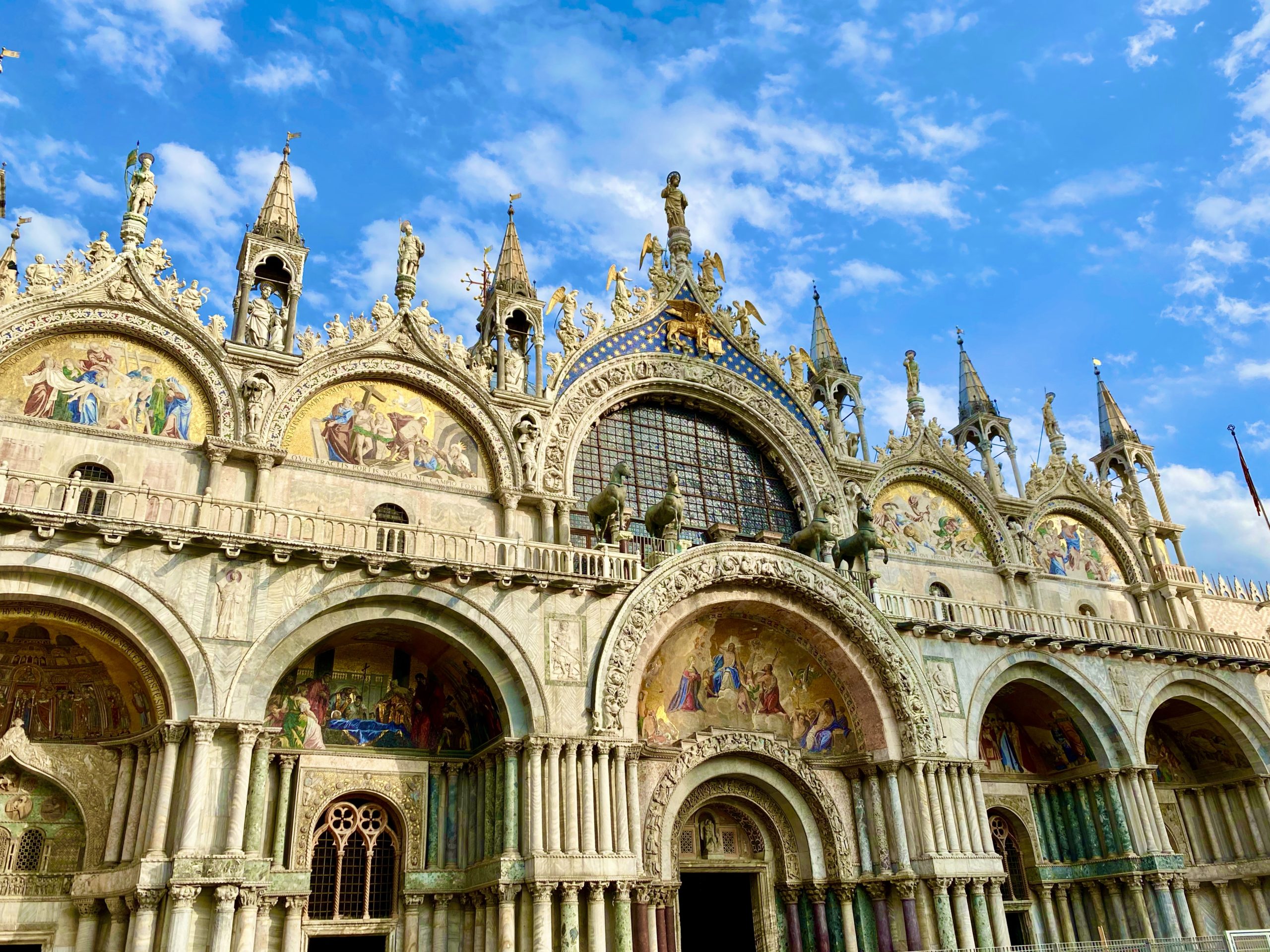
Text & photos (unless otherwise noted) by Marla Norman
I admit it. We were selfishly hoping to have Venice all to ourselves on a recent visit. We’d heard the stories of empty piazzas and swans reappearing in the canals. Unfortunately, by the time we reach La Serenissima, the spell had been broken. Tourists had returned and the swans fled to whatever sanctuary they had previously occupied.
But, all whining aside, there are fewer crowds just now. And, as has always been the case, evenings in Venice are magical — this floating miracle continues to be “…preposterous. If you couldn’t see it with your own eyes and touch it with your fingers, you would think it was some poetic fancy. It really shouldn’t be there at all. But it is. And it is beautiful beyond words.’’ (Russell Norman)
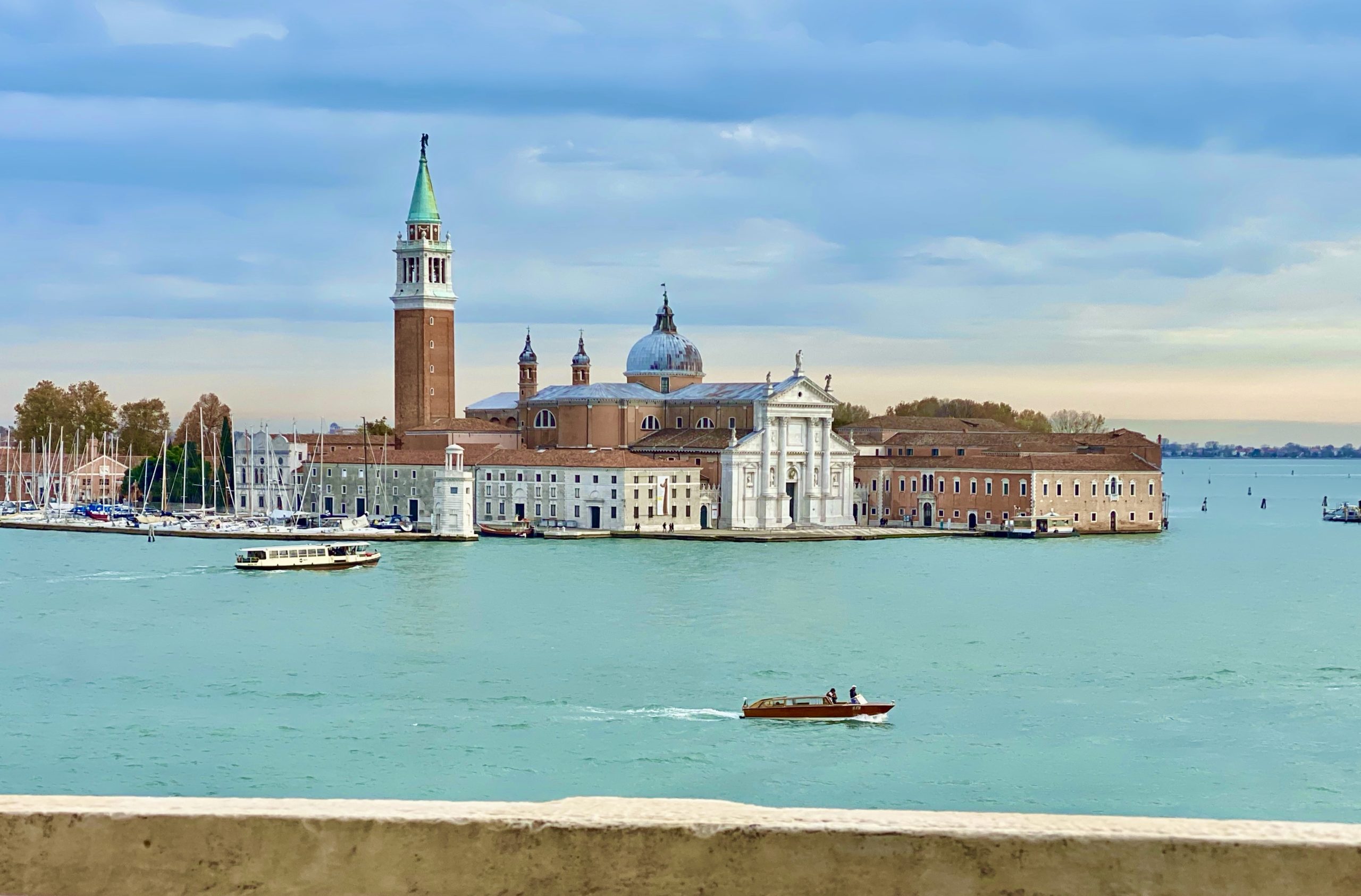
San Giorgio Maggiore sitting majestically across from the Doge Palace.
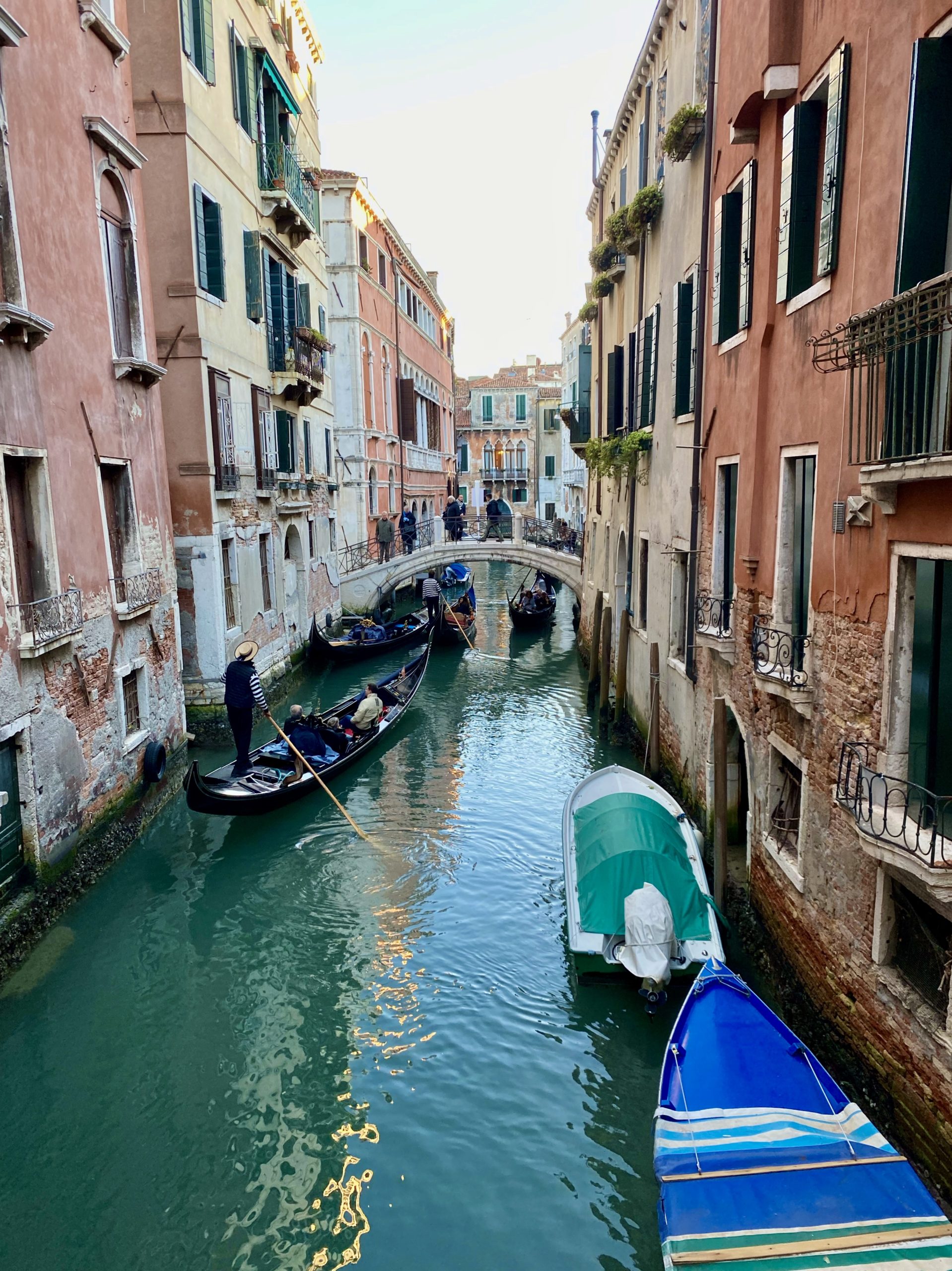
San Marco Canal & the Grand Canal
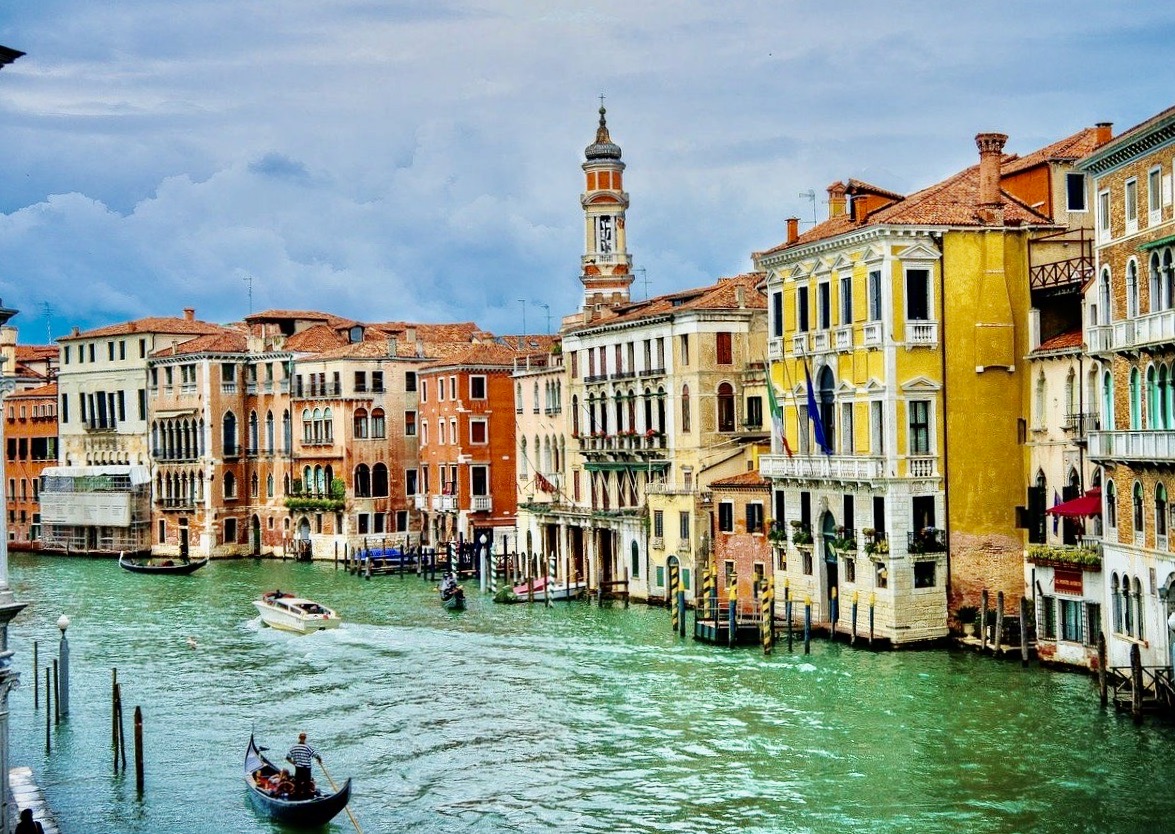
VENETO LENTO
Our plan is to leisurely revisit all the Venetian attractions and beautiful sights we’ve not seen in several years. As we arrive from Marco Polo, the dock at Madonna dell’Orto is quiet, not a soul in sight — so far so good!
In search of a tranquil spot, we booked at Hotel Palazzo dei Dogi located in the Cannaregio, on the less-popular northern side of the islands. Built in the 16th century, the Palazzo has lived many lives — as home to the French ambassador to Venice, a monastery and a convent. In the 18th century the Patarol family planted a large private garden, which over time has expanded to become one of the largest private green areas in Venice. It is a rare gem, a visual masterpiece spanning over 2,000 square feet.
Years ago, Cannaregio was the Jewish Ghetto. (Interestingly, the word “ghetto” actually originated from the Venetian word for “iron foundry” — an operation that once existed in the Cannaregio.) Now, the neighborhood is home to the last of the Venetian locals. Fishermen and business executives mingle in the small osterias and bars. English is rarely heard. And after 8:00 p.m. the only sound is the Adriatic lapping against the canals.
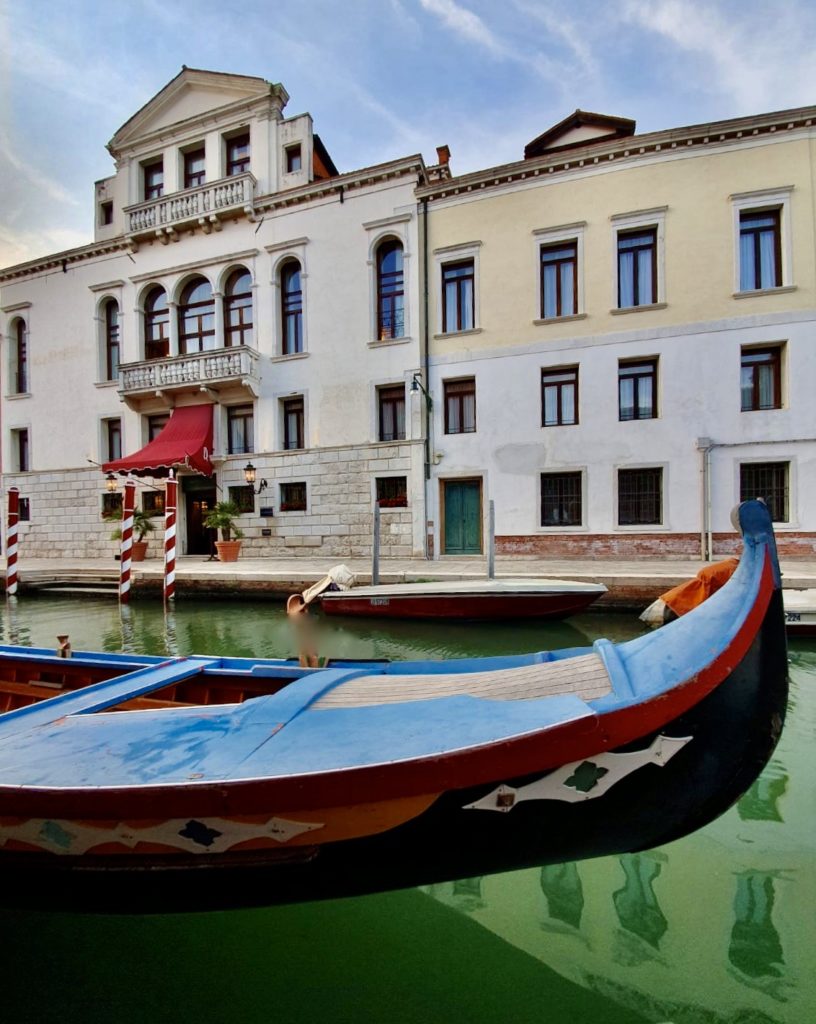
Built in the 16th century, the Hotel Palazzo dei Dogi has lived many lives — as home to the French ambassador to Venice, a monastery and a convent.
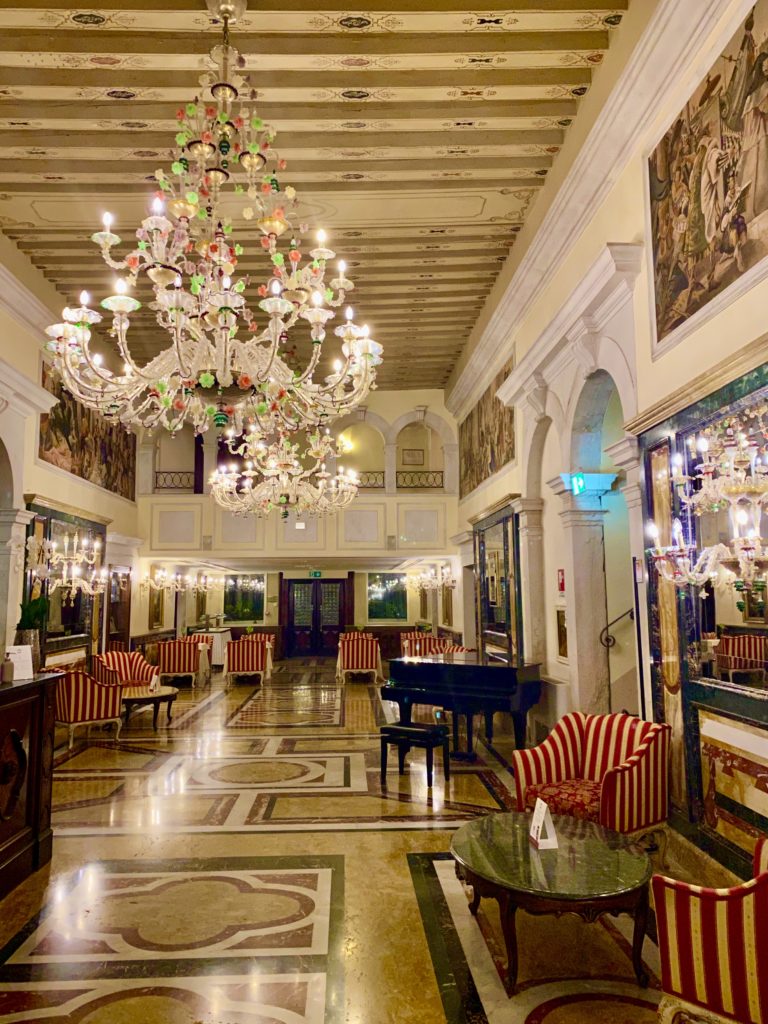
CUCINA VENETA
Enjoying the local cuisine is, not surprisingly, a major part of our itinerary. Our first stop is the Hotel Ca’ Sagredo — a visit that allows us to combine art and cuisine.
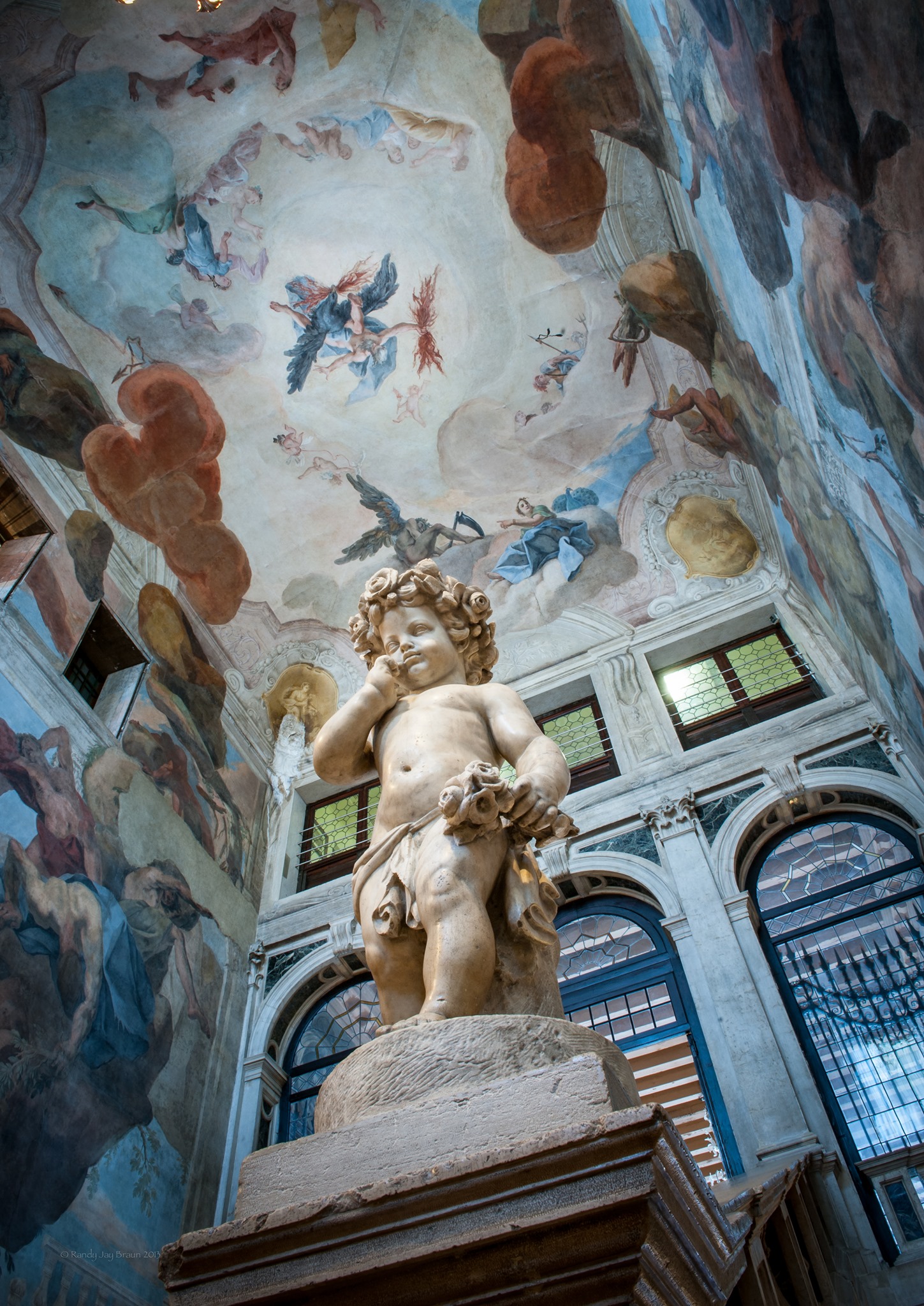
Sumptuous entrance at the Hotel Ca’ Sagredo featuring frescoes by Pietro Longhi, painted in 1734. Photo courtesy of Hotel Ca ‘Sagredo.
The palace has a remarkable collection of frescoes from the 17th and 18th centuries by artists including Niccolò Bambini, Giambattista Tiepolo, Sebastiano Ricci and Pietro Longhi. Because Ca’ Sagredo is also designated as a national museum, all these treasures are available for public viewing. We wander through the rooms amazed by the massive size of the images painted across ceilings and walls. Friendly staff are on hand to explain the mythology and legends that inspired the art.
In contrast to the vast salons and gigantic frescoes, our dinner reservation at L’Alcova is, as the name suggests, in an elegant dining room with only nine tables. (Be sure to reserve ahead!) This intimate setting, within the Hotel Ca’ Sagredo, comes with views of the Grand Canal.
The menu changes daily and is sourced from the Rialto Market across the street. Dishes like monkfish with cherries and wild baby asparagus, burrata-filled tortellini with clams, fresh basil, capers, and pine nuts, are paired with a well-curated wine list representing Italy’s different wine regions.
On the following day, Osteria Alle Testiere is another memorable experience. An itty-bitty hole-in-the-wall, that seats only 22 diners, Alle Testiere is regarded as one of the the top seafood restaurants in Venice. Best friends and owners, Bruno Gavagnin and Luca di Vita change out their menu regularly. Items often include spider crab, sea bream, monk fish, prawns, sole or sword fish. Desserts are also a specialty: panna cotta, bonet (Piedmontese chocolate pudding) and cream rosada (Venetian cream caramel).
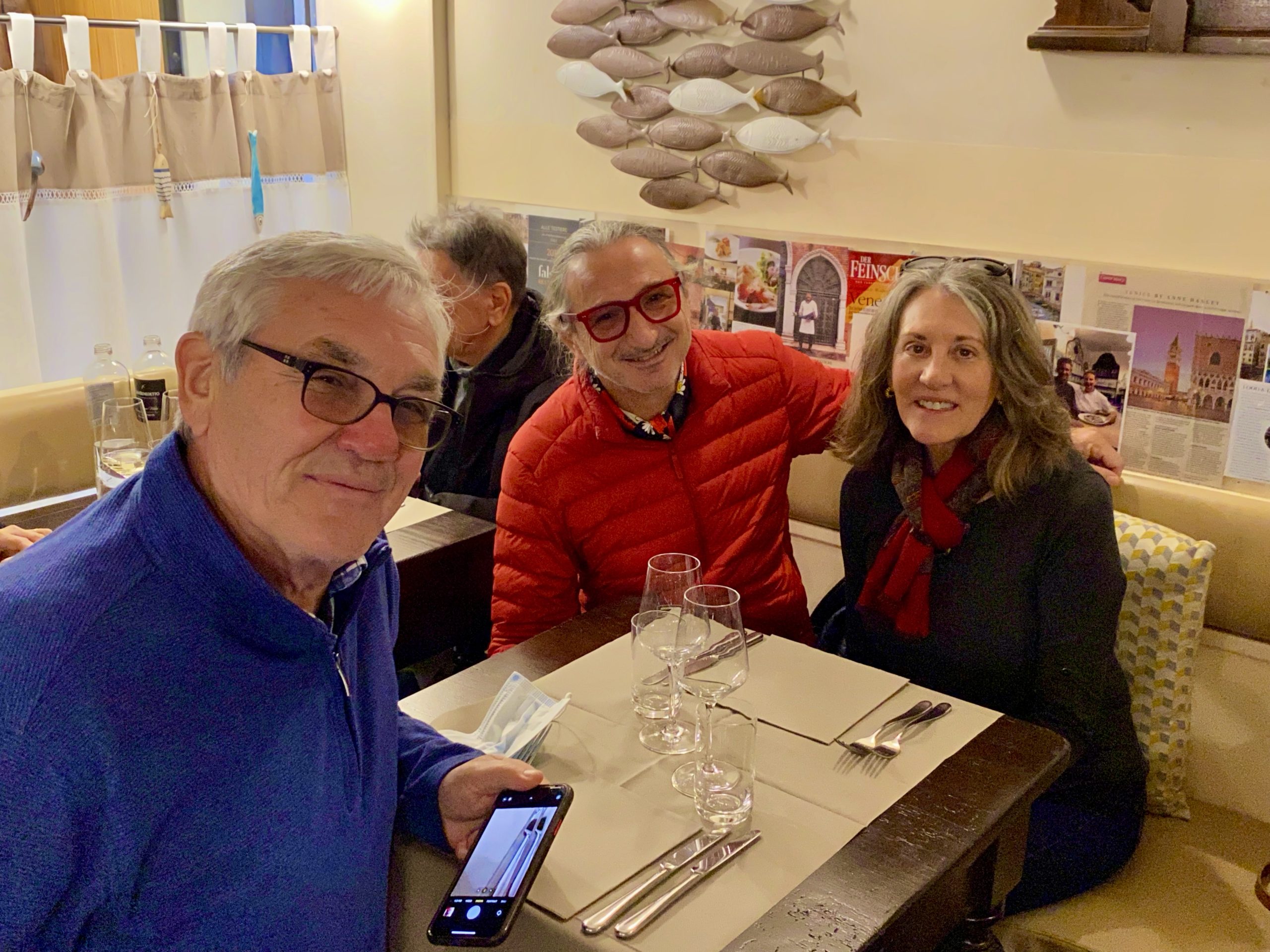
The organic produce served along with the delicious seafood at Osteria Alle Testiere is grown on Sant’Erasmo Island by our good friend G.P. Cremonini, (center).
But the restaurant that has us talking for days is Local. With its beautifully refined interiors, terrazzo floors and views of the Rio della Pietà, we were instantly impressed.
Owner Benedetta Fullin welcomes us and explains (passionately) her approach to the menu: “Venice is not only one of the most beautiful cities in the world, it is also a place where water and earth merge into an incredible ecosystem. Add to that centuries of Venetian commerce and trade in exotic lands and the result is a very special cuisine.”
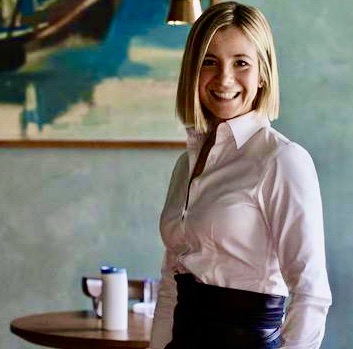
Benedetta Fullin, owner of Local restaurant.
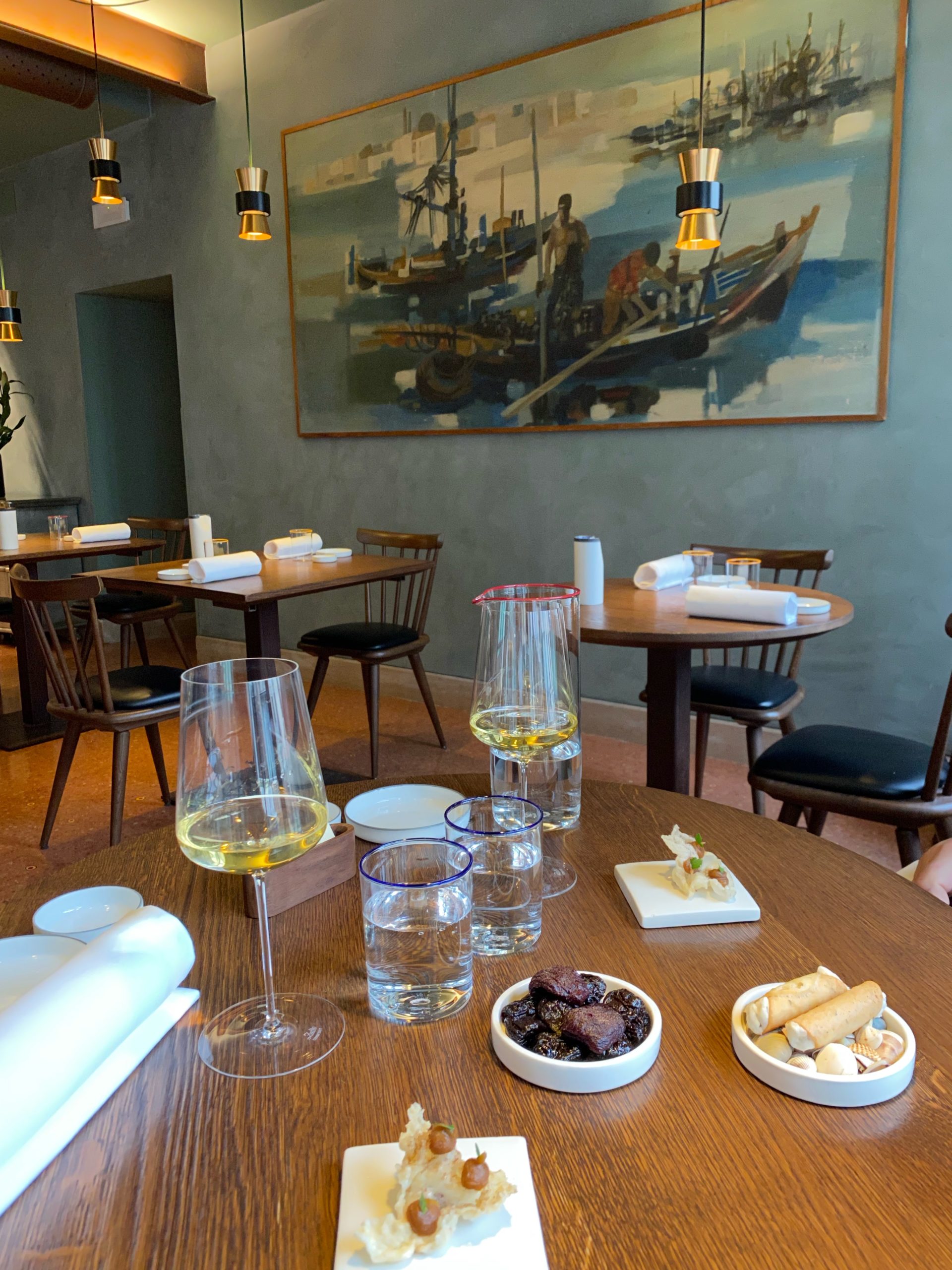
Dining rooms at Michelin-star Local, featuring New Venetian Cuisine.
After sampling the tasting menu, we heartily agree. Local presents ingredients sourced from throughout the Venetian lagoons to incorporate in traditional dishes with ingenious twists. Starters include snails and sardines (truly exceptional — briny & succulent!) as well as a creamy risotto with gò (small fish from the Venetian lagoons). Main courses include a catch of the day, such as sea bass, mackerel, or mallet. A meat course is always included as well, while a cheese course with tiramigiù (Local’s version of tiramisu) finish off the exceptional meal
Along with each course, small illustrated cards provide details about the cultural significance and history of each dish. These are in addition to detailed explanations for the food provided by Benedetta and her staff. Clearly, Local has earned the critics’ praise and their Michelin star.
TEATRO LA FENICE
One of the most famous opera houses in the world, La Fenice hosts over 100 operas annually. But, travelers unable to schedule a visit during a performance can still admire the venerable theater by taking advantage of the daily tours. Historical archives are all available as well — posters, photographs, opera and symphony scores are regularly on display.
La Fenice originally opened in April 1792. Incredibly, the name — The Phoenix — became a precursor for the tragic history the opera house has endured. Just 44 years after the initial opening, the magnificent structure burned to the ground. Rebuilt again, a second fire destroyed La Fenice in 1836. Then, unbelievably, a third fire destroyed the theater in 1996 leaving only the exterior walls. Once again, rising from the ashes, literally, La Fenice was rebuilt and opened in November 2004.
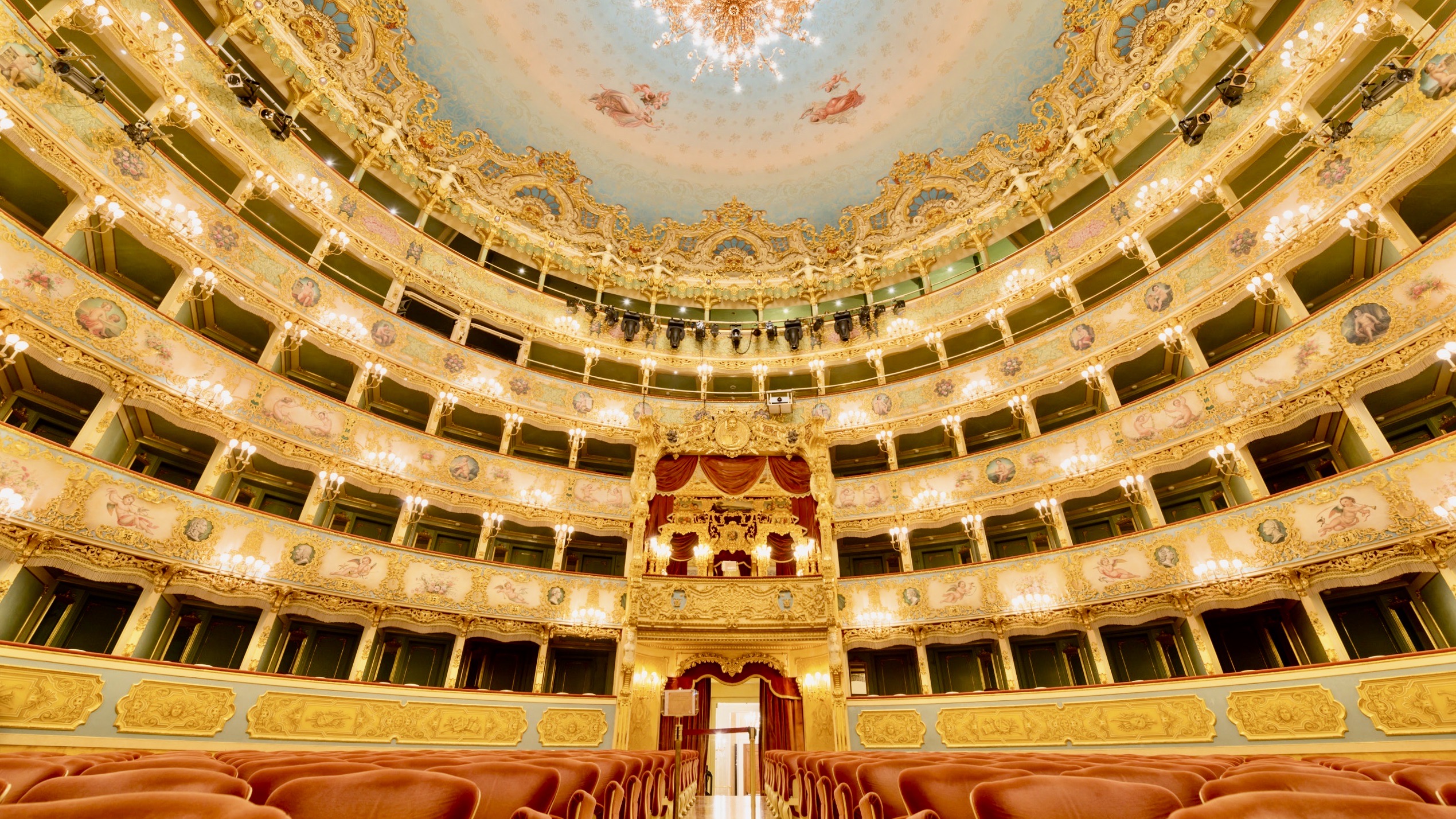
The name La Fenice— (The Phoenix) — became a precursor for the tragic history the opera house has endured. The magnificent theater has burned to the ground three times. Photo courtesy of Teatro La Fenice.
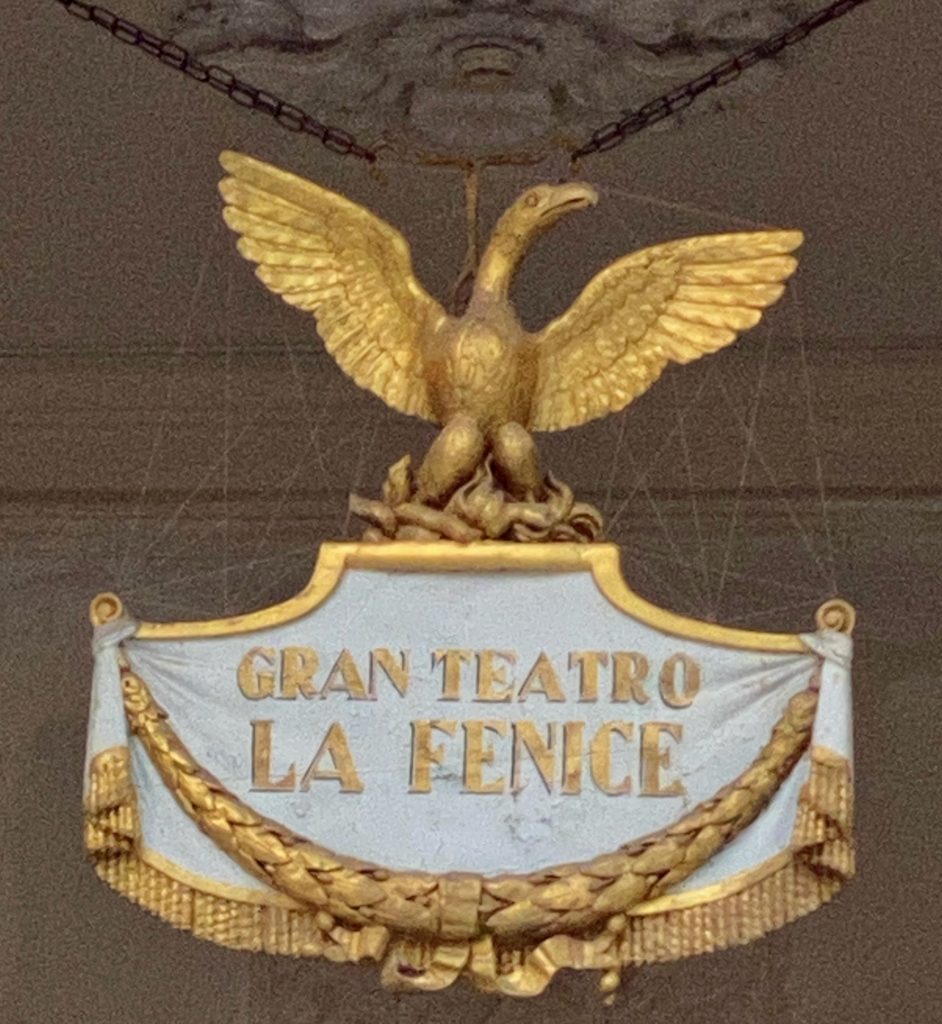
At the entrance of Teatro La Fenice – the Phoenix — an unwittingly accurate symbol for the opera house.
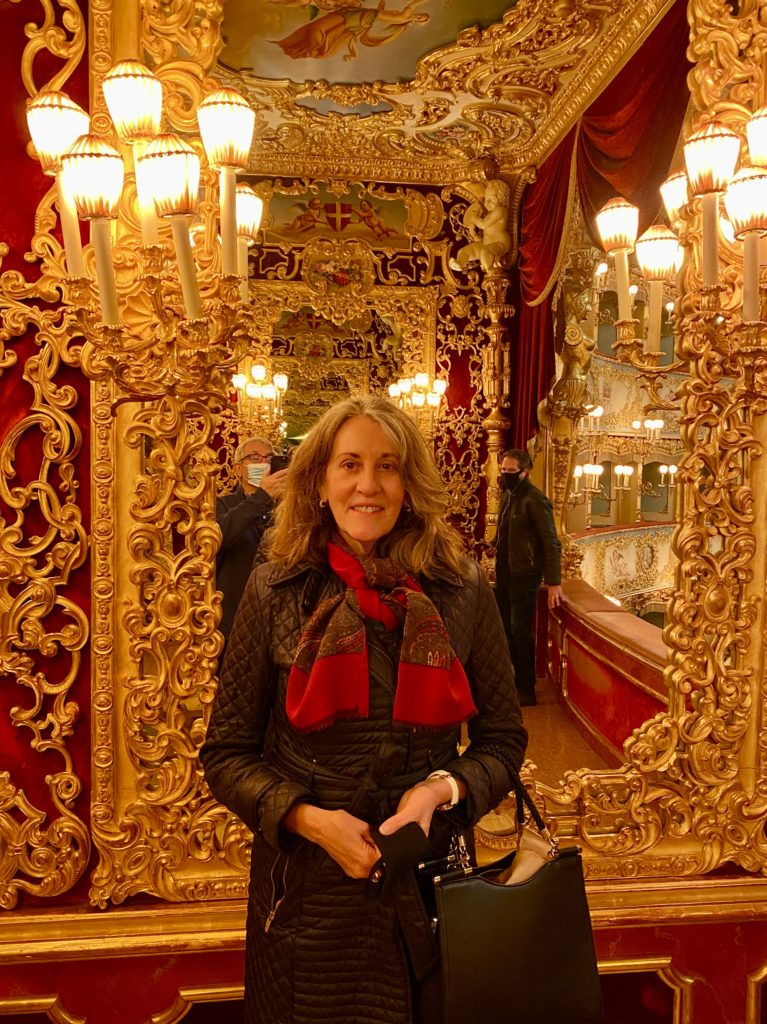
The Royal Opera Box — adorned in Baroque gilt and red velvet.
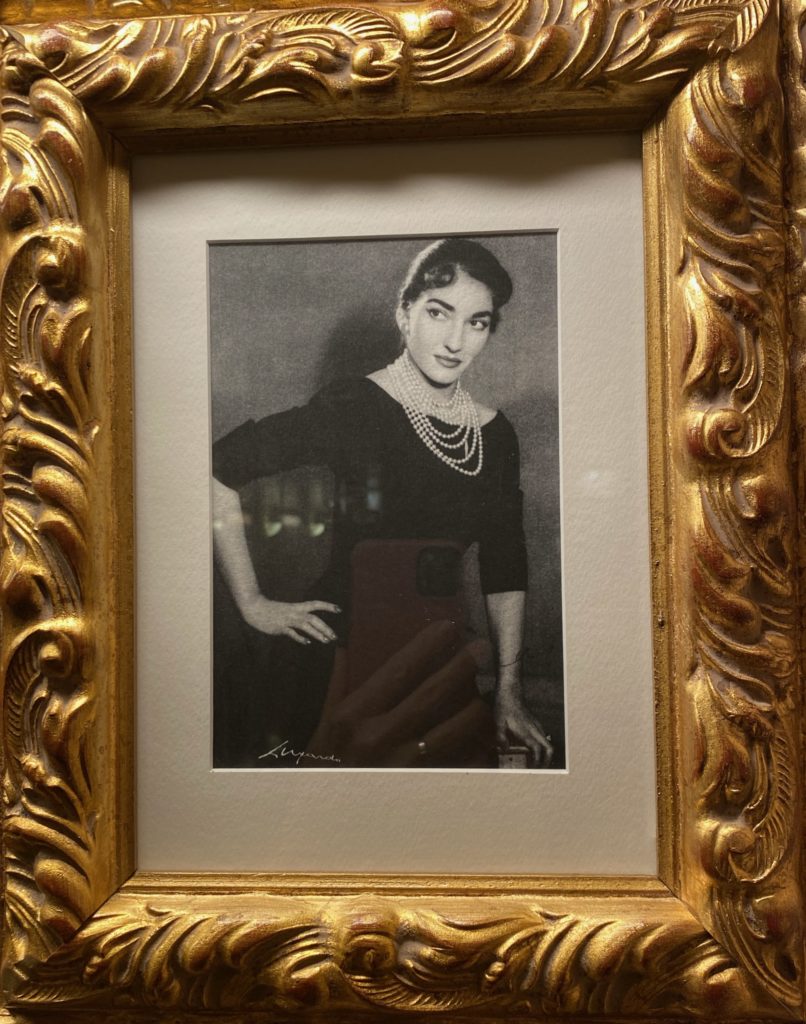
Maria Callas made her opera deubt at La Fenice. A wing of the theater is named in her honor.
In between fires, La Fenice became renowned as the site of operatic premieres including works by composers such as Gioachino Rossini, Vincenzo Bellini, Gaetano Donizetti and Giuseppe Verdi. Internationally-known opera stars Enrico Caruso, Mario Lanza, Maria Callas, Luciano Pavarotti, Plácido Domingo and Anna Netrebko have all performed at La Fenice.
The theater was particularly important to Maria Callas, who debuted at La Fenice in 1947 when she was just 24, and was featured in numerous production until 1954. Because “La Divina” was such an influential presence at La Fenice, an entire wing is dedicated to her, with memorabilia from her storied career.
BASILICA SAN MARCO
During our stay in Venice, we work hard to avoid Piazza San Marco. Packed with tourists until late afternoon, the famous square is often difficult to even walk through. But on our last night in Venice we have a special appointment — an evening tour of the Basilica San Marco.
We’ve been through the Basilica on previous visits, but the large numbers of visitors streaming through the cathedral made it difficult to view much. Our tour this evening, through WALKS OF ITALY, is after hours. Our group consists of 10 people, so we’re hoping to have an unobstructed view of the ancient cathedral and its treasures. Additionally, the Walks of Italy tours have worked out a special arrangement with the Basilica directors to turn on the interior lights, normally off during the day, thus illuminating the famous mosaics.
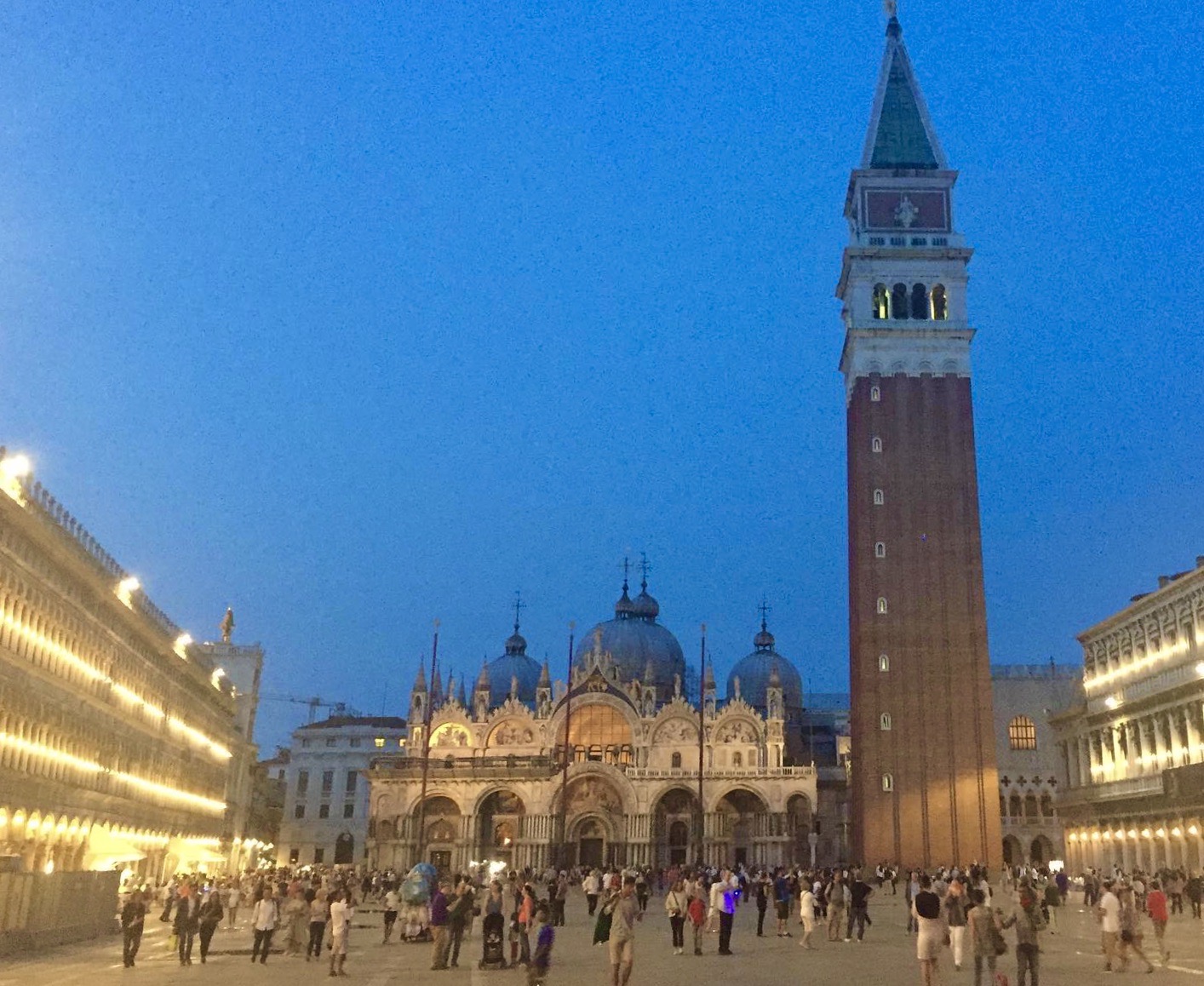
As striking and confounding as Venetian architecture is, nothing is as heart-stopping as the Basilica San Marco. Photo courtesy of Walks of Italy.
Waiting outside the cathedral for our guide, we study the monumental structure. As striking and confounding as Venetian architecture is, nothing is as heart-stopping as the Basilica San Marco. With its profusion of domes, luminous mosaics, golden statues and spectacular bronze horses, it is like something completely alien.
Our guide arrives and introduces himself as Mose (Moses), a native Venetian and art history major. Leading us towards the front entry of the Basilica, he tells us: “The early history of San Marco is all about a kidnapping in the 9th century. A group of Venetian merchants, determined to bring the body of Saint Mark the Evangelist back to Venice, sailed to Alexandria, Egypt. There, they smuggled the remains of Saint Mark out of the country. It was a dangerous journey, since Muslim guards were on watch and the return voyage by sea was complicated. However, once the remains arrived safely, Doge Giustiniano Particiaco proclaimed Mark the new patron saint of the Republic of Venice and commanded that a church be built in his honor.”
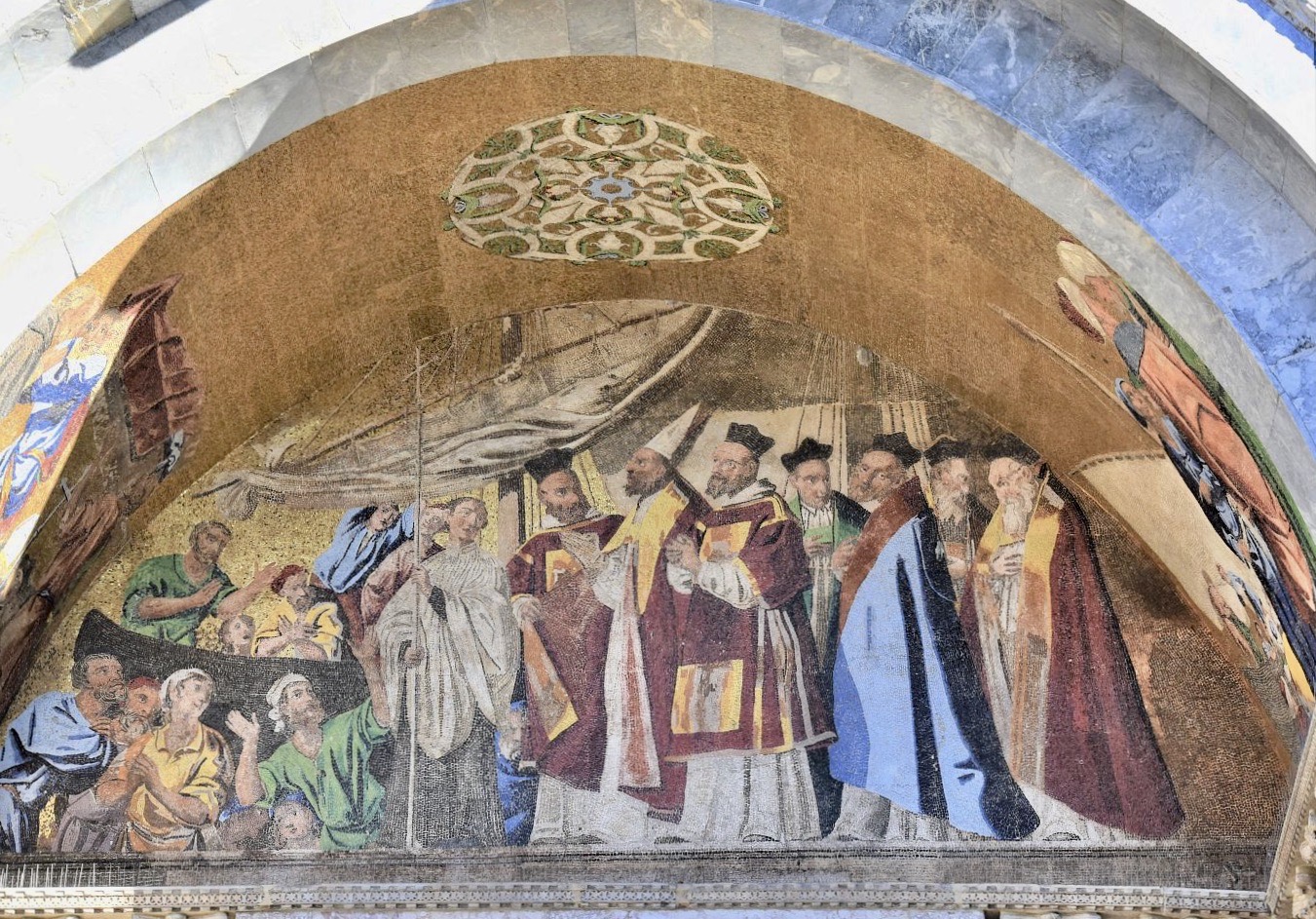
Mosaic on the façade of the Basilica, detailing the return of Saint Mark’s remains.
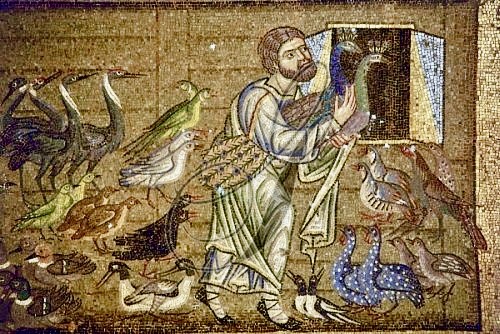
A mosaic depicting Noah’s ark is in the entrance of the Basilica.
Mose points out the four mosaics on the façade of the Basilica, chronicling Saint Mark’s return to Venice and final interment. “Was it really Saint Mark the merchants brought back,” he asks. “Or was it just some bag of bones.” He shrugs. “We’ll never know. Obviously enough people have believed the story to create all of this,” he says gesturing to the cathedral.
Within the Basilica itself, more than 43,000 square feet of mosaics cover the vaults and cupolas. Gold and other precious metals were ground to create finite bits for the the intricate works of art — unimaginable in their detail! Many portray biblical scenes from both the Old and New Testament. One particularly striking work features Noah’s ark with dozens of animals waiting to board. Nearby, Mose points out a mosaic where an amorous Adam and Eve are exchanging a kiss. “This is unique in religious imagery,” laughs Mose, “but we Venetians have always been a little irreverent.”
As we approach the altar in the dimly lit cathedral sanctuary, Mose asks us to take a seat. “Be patient,” he says “And be ready to be dazzled.” Little by little the lights come up, then all at once we’re amazed as the sumptuous gold mosaics glitter across five domes. “I’ve seen this dozens of times and I still find it mind-blowing,” says Mose. “It’s easy to see why it’s called the Basilica d’Oro (Golden Basilica) isn’t it?”
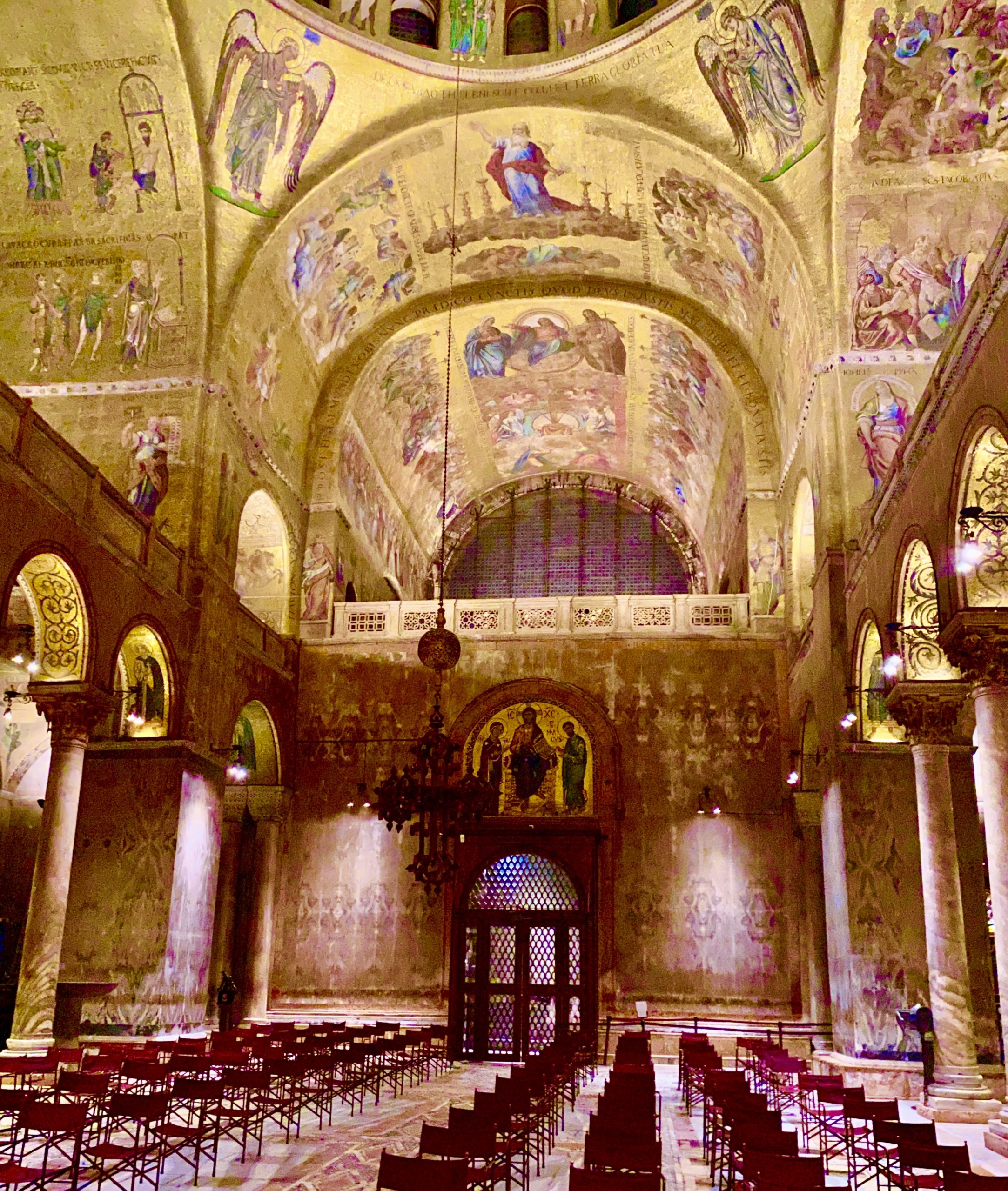
Dome mosaics date from between 1160 and 1200, with the oldest above the choir.
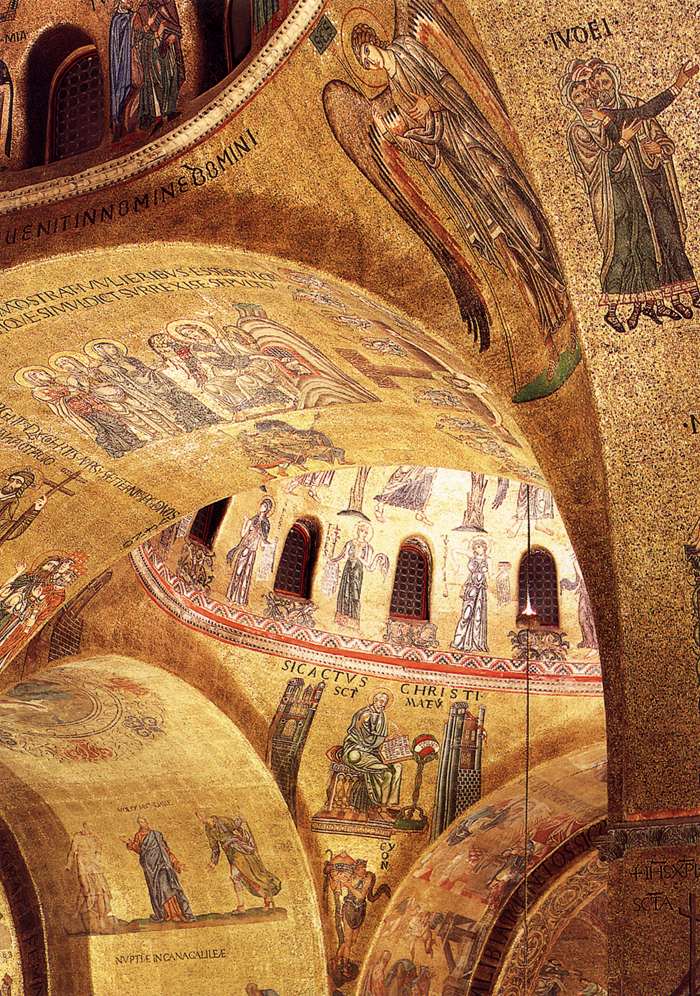
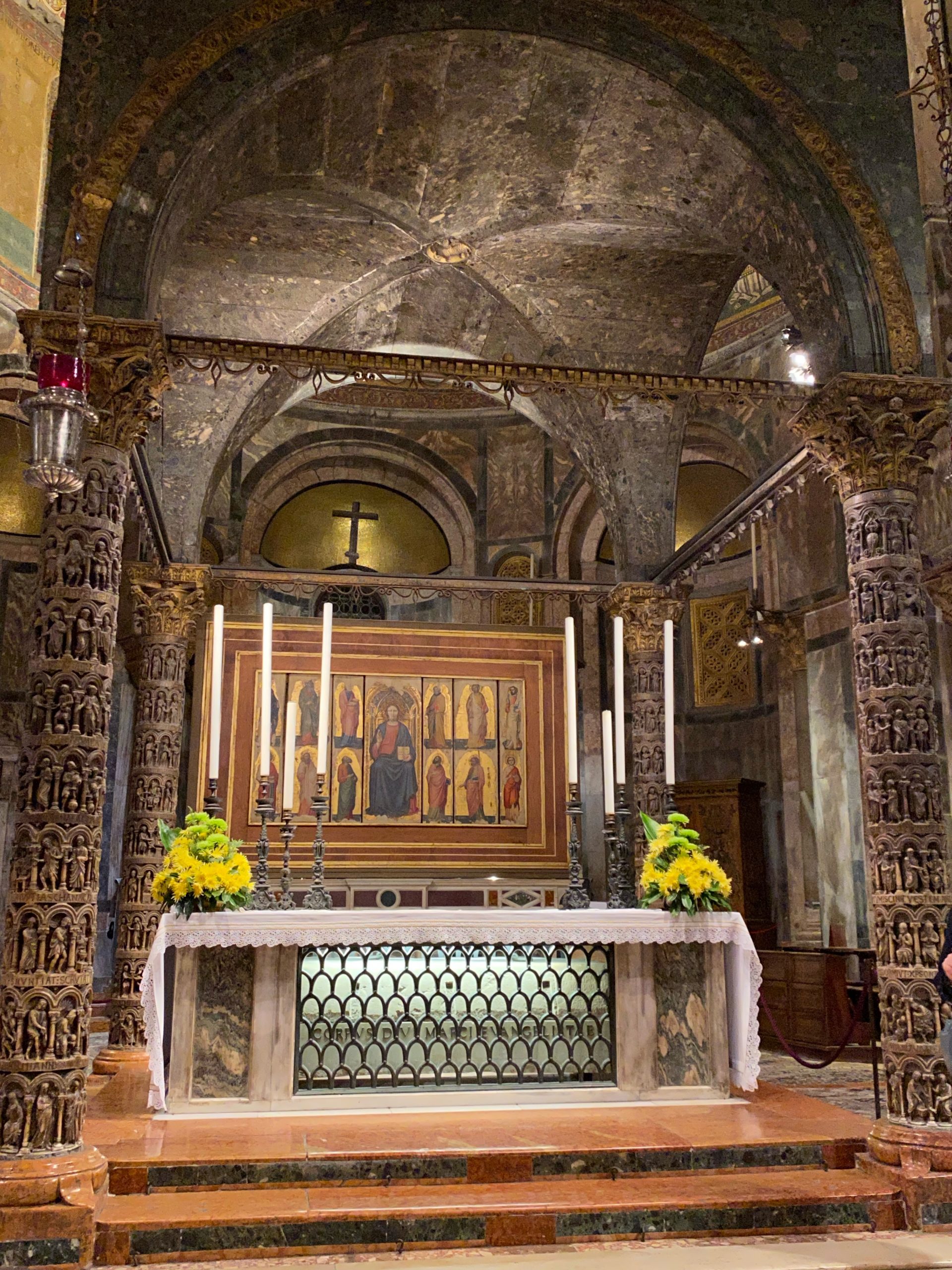
Main altar housing the relics of Saint Mark.
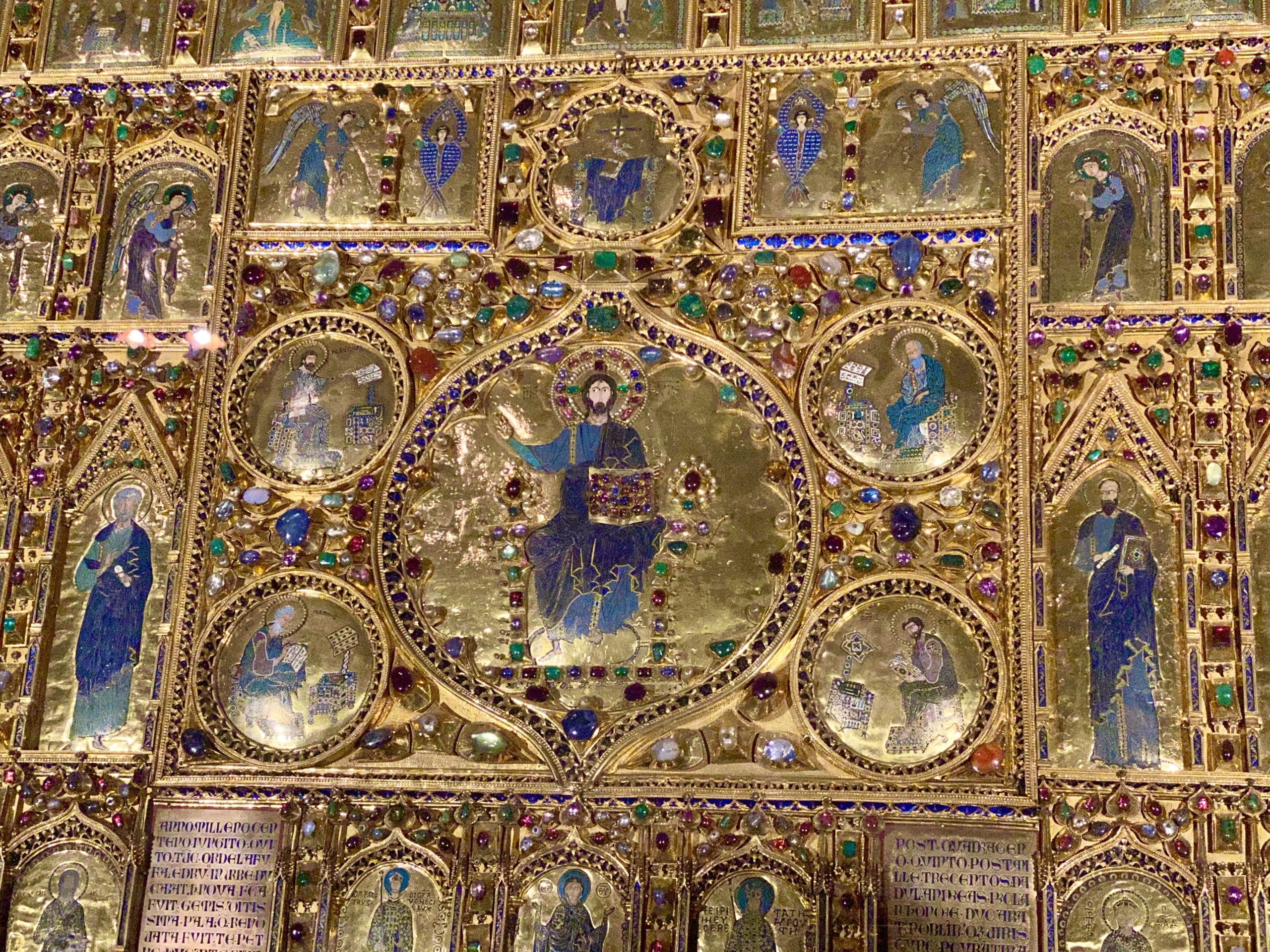
Pala d’Oro -made of gold work, enameled medallions and 2,000 gems and precious stones.
Most of the dome mosaics date from between 1160 and 1200, with the oldest above the choir. The first dome from the entrance shows a dove representing the Holy Ghost in the center of a halo that extends to the surrounding Apostles. The central dome shows Christ surrounded by stars with Mary between two cherubim and the Apostles. In the Cappella di San Giovanni, above the north transept, are 12th-century mosaics portraying the life of Saint John.
After taking time to study and photograph the mosaics, we ascend the steps to the altar, where the remains of Saint Mark are kept. There too is the Pala d’Oro — the magnificent altar piece or retable. Intricate gold work and enameled medallions depict the life of Christ, the life of St. Mark, and other biblical themes. Work on the Pala d’Oro continued over five centuries as new elements were added. The last additions were between 1343 and 1345 when nearly 2,000 gems and precious stones were set in place — a stunning arrangement of emeralds, sapphires, rubies and enamel pieces.
From the altar, we descend into the crypt. At one time, the remains of Saint Mark were kept here. However, because of continual flooding, the relics of the Evangelist were permanently moved in 1811 to the main altar. The crypt was then reopened in 1889; since then it has also been used as a burial place for the Patriarchs of Venice.
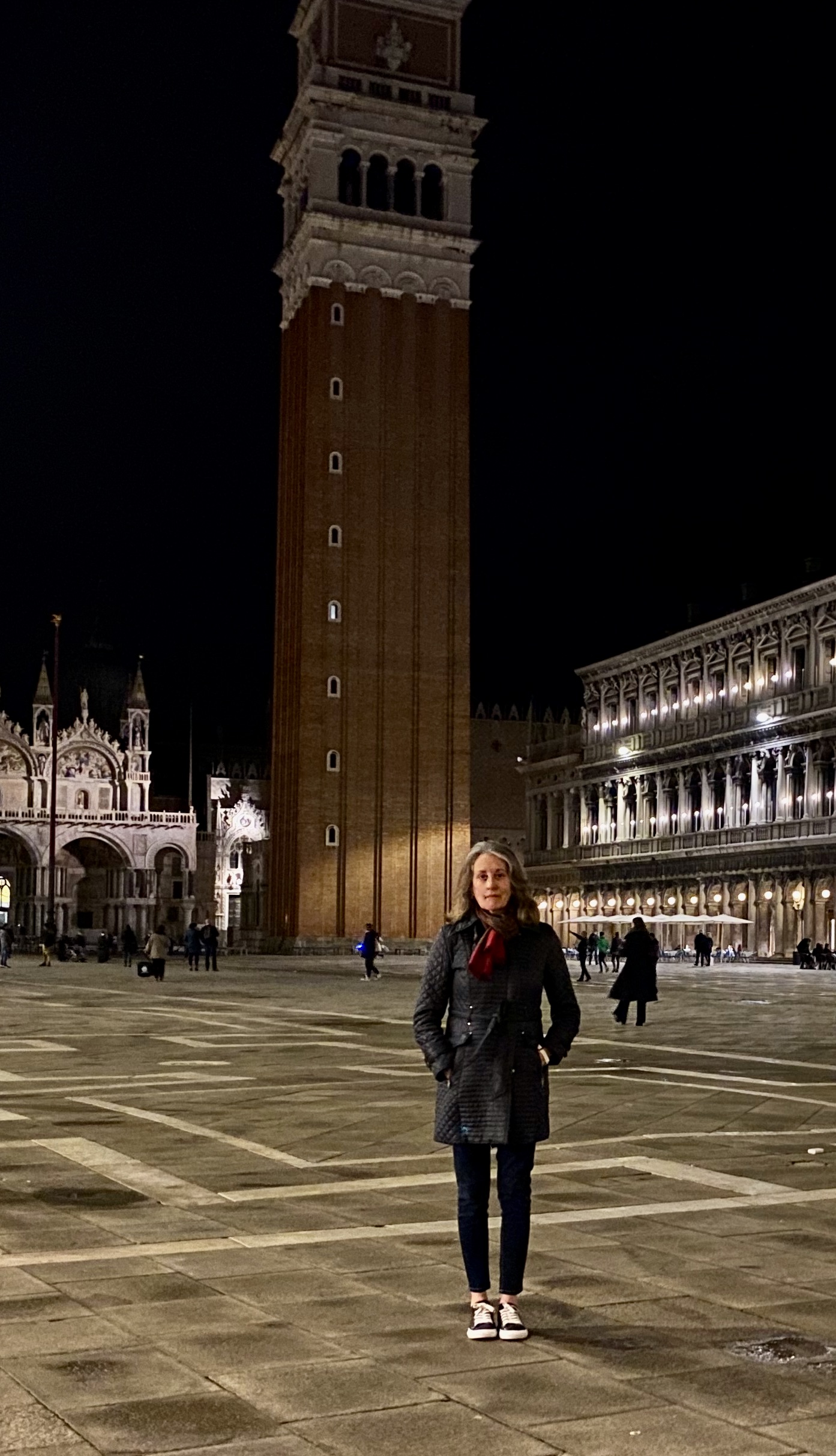
An almost deserted Piazza San Marco. Photo by Michel Thibault
The tour concludes in under two hours. Our heads are spinning as we leave — not just from the numerous golden mosaics and hundreds of gems, but from the dizzying amount of history we’ve covered in such a short time.
It’s dark and eerily quiet as we exit the Basilica and walk across the Piazza. Fog and heavy drizzle have blown in from the lagoons. We turn around for a last look and see only opaque shapes. The enormous cathedral seems to have vanished in a cloud of mist.
But after all, Venice is as much dream as it is reality. If we hadn’t touched it, we’d think it never existed at all….





